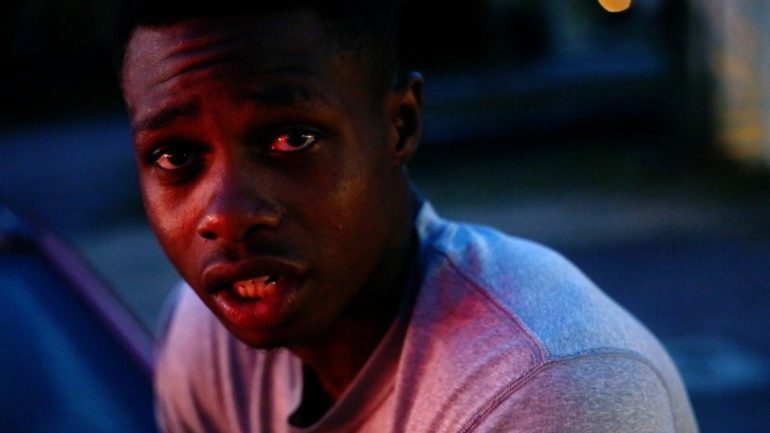Film Review: ‘Hale County This Morning, This Evening’
By Owen Gleiberman
LOS ANGELES (Variety.com) – The simplest way to describe “Hale County This Morning, This Evening” — and maybe the best way, since it’s a film of elemental radiance — is to say that it’s a documentary put together like a series of photographs. In this case, the photographs are filmed images, so they in effect come to life. The director, RaMell Ross, moved to Hale County, Alabama, in 2009 to work as a basketball coach and photography teacher, and the film is his impressionistic portrait of the life he found there — a caught-on-the-fly tapestry of experience. James Agee and Walker Evans shot some of their most famous images in Hale County (named for a Confederate officer; pop. 16,000), and Ross’s film could be considered a raw ragged lyrical answer to their mythologies. Filmed over several years, “Hale County” is a diary of a time, place, and culture (African-American life in what’s left of the rural South, much of it stranded on the edge of poverty), and you could call it a transcendental scrapbook, because it wipes away the muck of subjectivity that guides most movies. It turns the audience into direct receptors of experience.
It’s worth noting where a film like this one fits into the larger landscape. “Hale County” won a Special Jury Award for creative vision at the 2018 Sundance Film Festival, and it then played for one week in September. It’s the kind of documentary-as-lyric-collage-poem that’s destined, at best, to find a sliver of an audience, yet it has been opening, in artisanal small runs, in more and more theaters. The movie has won year-end attention (it made this year’s Oscar documentary short list), and once you let yourself glide onto its wavelength, it’s got a cosmically becalmed addictive quality.
As a filmmaker, Ross keeps surprising you — you never know what the next image will bring — and that makes the film feel like a puzzle we’re assembling one live fragment at a time. About a third of the way through the 76-minute film, you begin to see the world in terms of the free associations created by Ross’ editing: a toddler in a “Lego Movie” T-shirt scurrying back and forth, a baptism, a solo basketball workout, a row of high-school princesses in gold tiaras, a man playing blues guitar (and damned if he doesn’t sound nearly as good as B.B. King), the moon looking just like a UFO, a TV ad for DiGiorno Pizza that might have been beamed in from an alien planet.
Ross homes in on two young men: Quincy Bryant, a budding father, eager but out of his depth, who’s begun to work at the local catfish plant where another local, the hard-bitten Mary Collins, has toiled for 20 years (Hale County is the catfish capital of the U.S.); and Mary’s son, Daniel, a student at Selma University who is trying to avoid the catfish fate by pinning his hopes on forging a professional basketball career. You could say that there’s a “Hoop Dreams” element to Daniel’s ambition, except that the dream is now a stray fragment. Daniel has obvious on-the-court talent, but he’s not very tall (in one locker-room moment, he just about hums with anxiety next to the other looser, larger players), and he remains one small focal point of a community caught between daily tides of joy and desperation.
Some of the images in “Hale County” have an unearthly beauty, like a cross in the rain bearing pink neon letters that read “Only Jesus Saves,” or a dumpster fire of truck tires outside a former plantation, the thick rubbery black smoke rising up in front of a tree shot through with the sun’s rays. During this sequence, Ross does something startling: He intercuts footage of the silent-era black comedian Bert Williams, so that it looks like Williams is gazing, from behind bushes, at the plantation, and we can’t help wondering what he’s thinking. Ross teases us with a title that reads “What happens when all the cotton is picked?”
The world we see in “Hale County” is poised between everyday pleasure and economic hardship; that’s what’s so beautifully unresolved about it. The film lists the Thai writer-director Apichatpong Weerasethakul as a creative adviser, and it’s very much of a piece with his gaze of stern compassion. A sudden death is as shocking as it could be, yet even here life goes on; that’s an element of the devastation. “I feel like I’m making enough money just to go back to work,” says Quincy, and it’s part of the film’s power that the line expresses his predicament, yet who amongst us doesn’t know that hamster-wheel feeling? “Hale County” is a work of lit-up social realism that’s suggestive enough to soar over boundaries of existence.
The ultimate way one judges a film like “Hale County This Morning, This Evening” is connected to one’s aesthetic value system. As daringly executed as the movie is, it wouldn’t come close to being among my top five documentaries of the year; I’m too much of a hard-wired narrative junkie. Yet “Hale County” lingers in the imagination. Days after you’ve seen it, you may find yourself drifting back, getting lost in one of its cleansing images of life as it is.

